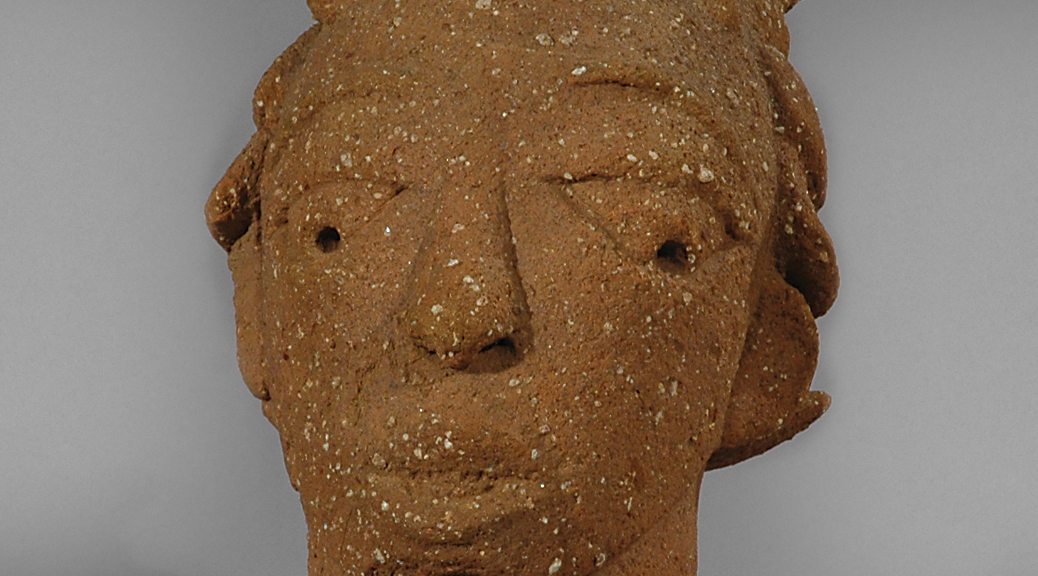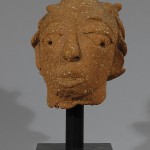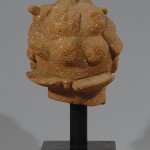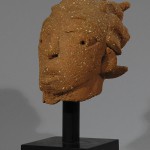EJC 0615-01
Nok Terracotta Head, Jos Plateau region of Nigeria
Terracotta head mounted on pedestal
H. 22 cm (8,7″)/32 cm (12,6″), W: 16 cm (6,3″), Weight: 2,45 kg
This unusually well protected head was probably attached to a full figure like most Nok Antiques. Now only the head remains, as it was discovered in argilous layers of the soil (very moving material) and have been protected from destruction by its spheric nature. Erosion is visible on this head, but no major injuries, and more important no sign of restauration. The sculpture certainly represents a young dignitary, as Nok Society was sophisticated and stratified, and dignitary had the right and means to have their personal portrait made. The portrait exhibits all the classic styles of Nok (found also later in IFE figures), dignity, self contained expression, with sophisticated ornamentation (here the hairstyle is made of multi layers of plaits). Typical Nok style triangle shaped eyes and eyesbrows in arch (later found in Yoruba Gelede). Lips and ears as well as hair finely designed and detailed. The overall impression is of quietness and power. Many of these antiques now in Museums around the world. Nok are often considered the origin of West African Art.
Age: Thermoluminescent test dates the head 4th Century AD. The test report made by QED lab is supplied with the piece.
Provenance: Came from a private tribal art collection in Paris; M. JM Lambert.
Literature: Department of AAOA. “Nok Terracottas (500 B.C.–200 A.D.)”. In Heilbrunn Timeline of Art History. New York: The Metropolitan Museum of Art, 2000–. http://www.metmuseum.org/toah/hd/nok/hd_nok.htm (October 2000)
Request price for Nok Head




